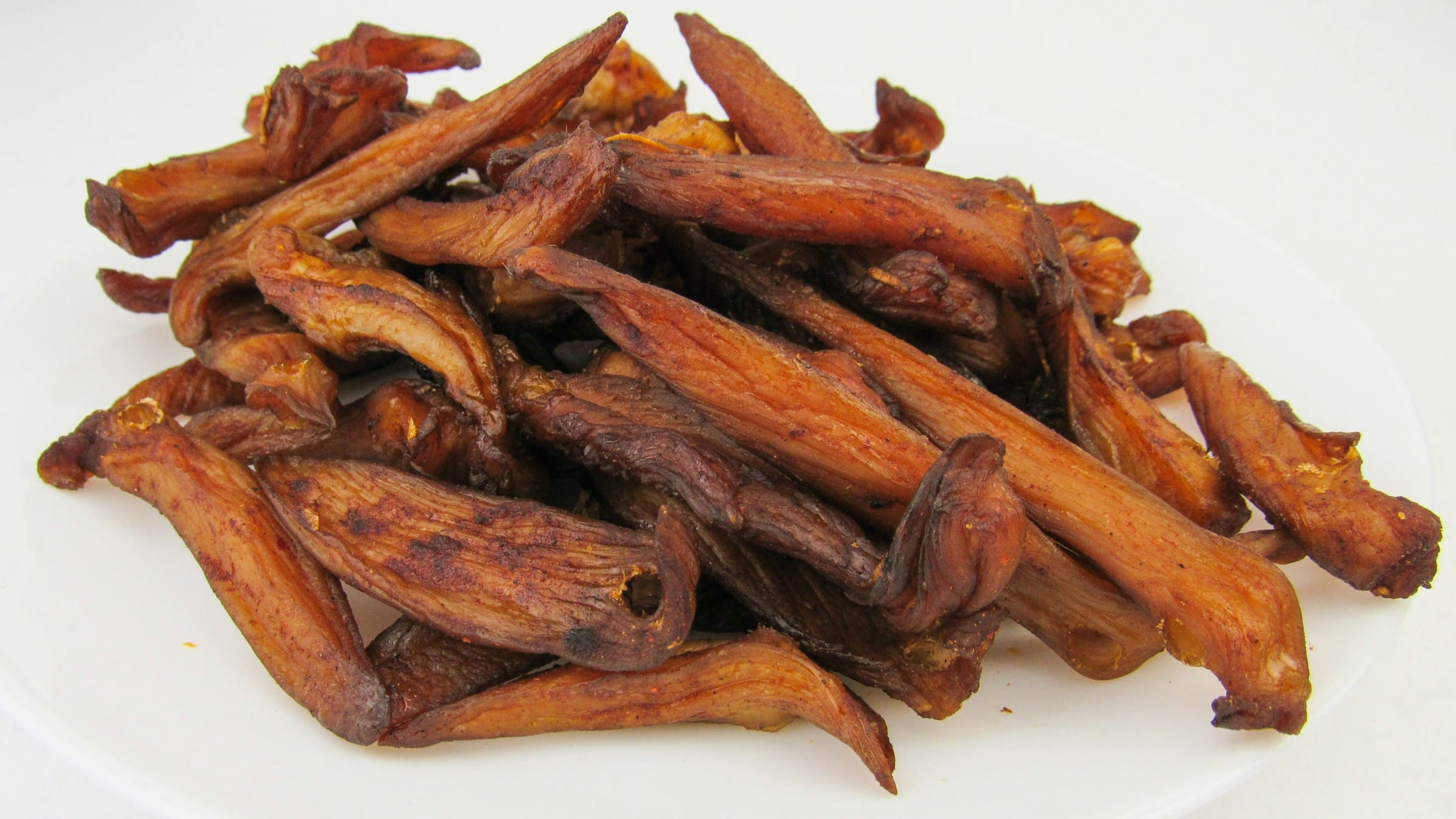Beef jerky is a favorite snack for many, offering a convenient, high-protein option that packs a flavorful punch. But have you ever wondered if your homemade jerky could taste even better? The secret may lie in the dehydrating techniques you employ. While many people believe jerky is simply a matter of drying out meat, the process is far more nuanced, with a range of techniques that can significantly alter the flavor profile of the end product. In this article, we will explore how the process of dehydration affects the taste of your favorite snack, and how you can experiment with different techniques to personalize and enhance the flavor of your homemade beef jerky.
Understanding the Dehydration Process
Before we can delve into the impact of different dehydration techniques on the flavor of jerky, it’s crucial to understand what happens when meat is dehydrated. Dehydrating is a process that removes water from the meat, slowing down bacterial growth and extending the shelf life of your food. It is a preservation method that has been used for centuries.
Lire également : How to Perfectly Brew a Traditional British Earl Grey Tea for Afternoon Delight?
The key to successful dehydration is maintaining a consistent temperature. Too high, and the meat will cook instead of dehydrating. Too low, and the dehydration process will be insufficient, leading to spoilage.
Choosing the Right Cut of Meat
The cut of meat you choose for making jerky has a significant impact on the final product’s taste and texture. The ideal cut is lean with minimal fat. Fat doesn’t dehydrate well and can make your jerky spoil more quickly.
A découvrir également : How to Achieve a Fluffy and Moist Lemon Poppy Seed Cake with a Zesty Glaze?
For a flavorful and tender jerky, opt for cuts like flank steak, eye of round, or top round. It’s important to trim off any visible fat before dehydrating. Once you’ve selected and prepared your cut, the meat needs to be sliced into thin, uniform strips. This not only ensures even dehydration but also allows the marinade to penetrate the meat more effectively.
The Impact of Marinades on Flavor
When it comes to enhancing the flavor of your beef jerky, a marinade can be your best ally. The marinade serves a dual purpose: it infuses the meat with flavor, and the salt content helps to further preserve the meat during the dehydration process.
Your choice of marinade ingredients can dramatically affect the flavor profile of your jerky. Traditional ingredients often include soy sauce, Worcestershire sauce, brown sugar, onion powder, and garlic powder. However, feel free to experiment. Try adding chili for a kick of heat, honey for sweetness, or even a splash of beer for a malty note.
Remember, the meat should be marinated for several hours, or even overnight, to allow the flavors to fully penetrate. Then, it’s time to get dehydrating.
Dehydration: Oven Vs. Dehydrator
When it comes to dehydrating your jerky, you have two main options: the oven or a dehydrator. Each has its advantages and can affect the flavor of your jerky in different ways.
Using an oven for dehydration is convenient because most people already have one. However, maintaining a consistent low temperature can be challenging. Ovens also tend to dehydrate more quickly than dehydrators, which can result in a less tender jerky.
On the other hand, a dehydrator is designed specifically for this task. It maintains a consistent temperature and airflow, leading to more even dehydration. It’s also easier to dehydrate large batches of jerky in a dehydrator than in an oven. However, dehydration in a dehydrator can take several more hours than in an oven.
The prolonged process in a dehydrator can lead to a slightly different flavor profile. Some connoisseurs claim that a longer, more gentle dehydration process allows the flavors from the marinade to develop more fully, resulting in a tastier jerky.
Experimenting with Dehydration Techniques
Now that you understand the basics, you’re ready to start experimenting with different dehydration techniques to maximize the flavor of your homemade beef jerky. Vary the marinade ingredients, play around with different cuts of meat, and try both oven and dehydrator dehydration to see which you prefer.
You could also experiment with the thickness of your meat slices. Thinner slices will dehydrate more quickly but may also have a more intense flavor as the marinade penetrates more fully. Conversely, thicker slices will take longer to dehydrate but may result in a chewier texture and subtler flavor.
Remember, the key to great jerky is patience. The dehydration process cannot be rushed, and the marinade needs time to work its magic. So take your time, enjoy the process, and look forward to the flavorful rewards that await.
Additional Flavor Enhancements and Safety Measures
While the dehydration process and marinade choice are crucial in making homemade beef jerky, there are additional tweaks that can enhance flavor further. Spices and seasonings play a significant role in boosting the taste. You can choose a variety of herbs and spices such as black pepper, cayenne, cumin, or smoked paprika to add depth to your jerky’s flavor. Chilies, for instance, give a fiery kick while sweet spices like cinnamon or nutmeg can add an unexpected but delightful twist.
Another technique to maintain the rich flavor of the jerky is by adding a dose of smoke. This can be achieved by using a smoker or adding liquid smoke to your marinade. The smoky flavor imparts a whole new level of deliciousness and complexity to your beef jerky.
Additionally, it’s also essential to consider food safety while making jerky. The University of Georgia Cooperative Extension Service recommends heating the dehydrated jerky to an internal temperature of 160°F after the drying process to ensure any potential bacteria are eradicated, enhancing the shelf life of the jerky.
Remember, making jerky is an art and science, and it’s all about finding the right balance of flavors that cater to your palate.
Wild Game Jerky: A Flavorful Alternative
For those who like to experiment and aren’t afraid to venture into new culinary territories, consider trying your hand at making jerky with wild game meat, such as wild boar or venison. Wild game jerky is not only delectable but also boasts a high protein and low fat content.
Like beef jerky, the key to a good wild game jerky lies in the cut of meat and the marinade. Because wild game is leaner than beef, it’s crucial to select a cut that won’t become tough when dehydrated. The marinade also plays a vital role in tenderizing the meat and masking any gamey flavors.
Remember, homemade wild game jerky also needs to be heated to a specific internal temperature after drying for food safety, just like homemade beef jerky.
Conclusion
Creating flavorful homemade jerky, whether it’s beef or wild game, is an exercise in patience and creativity. The journey begins with selecting the right cut of meat, preparing a flavorful marinade, and understanding the nuances of the dehydration process.
Utilizing different dehydration techniques, whether using an oven or a jerky dehydrator, can significantly alter the flavor profile of your jerky. Additional flavor enhancements like spices, seasonings, and smoke can also elevate your homemade jerky to new heights.
Remember that safety is paramount, and taking steps such as heating the jerky to the correct internal temperature post-dehydration can ensure your jerky is not only tasty but also safe to consume.
Whether you’re an amateur cook or a seasoned chef, making jerky is an exciting culinary adventure that rewards you with a high-protein, flavorful snack. So, grab your apron, and let’s get dehydrating.






